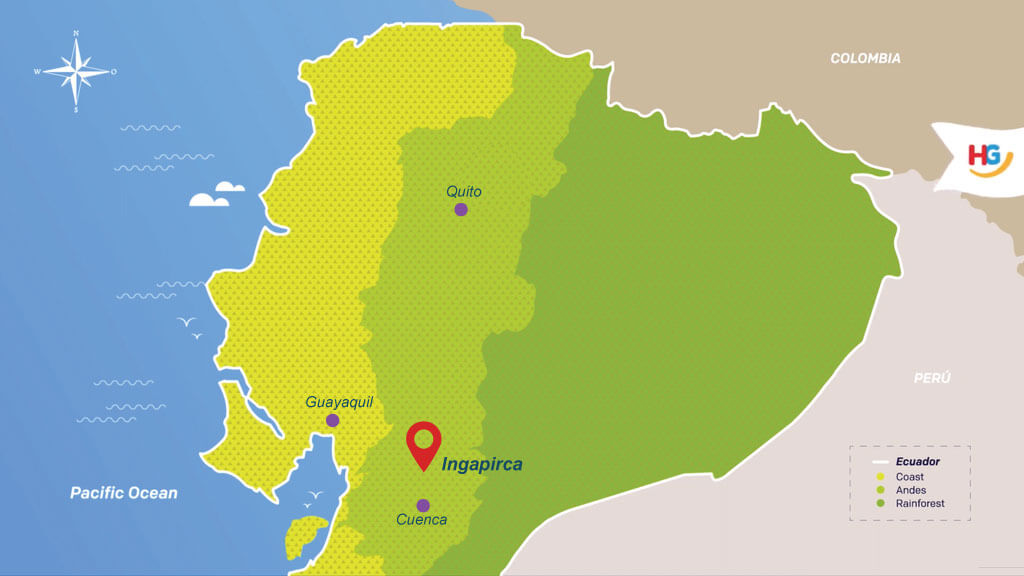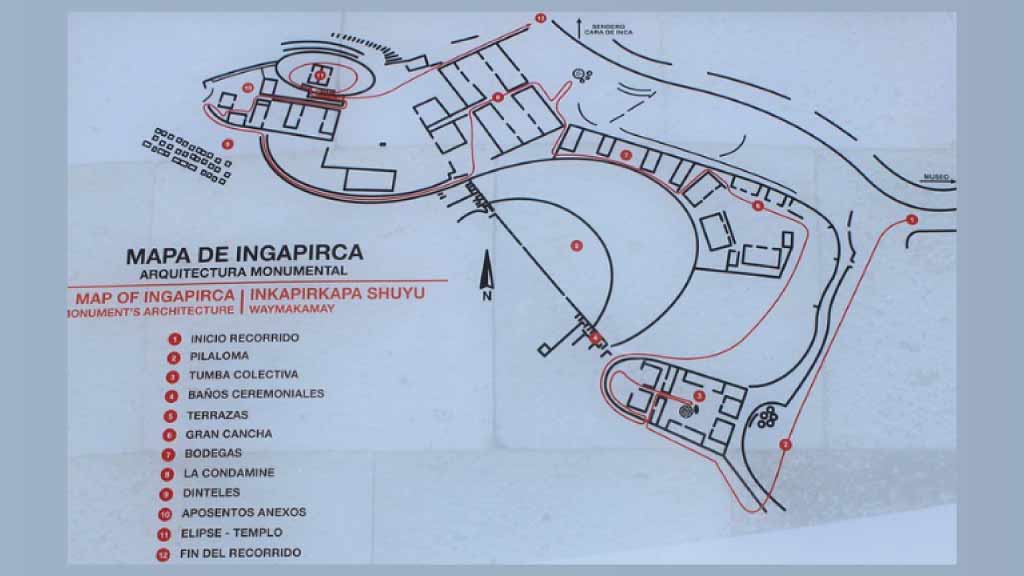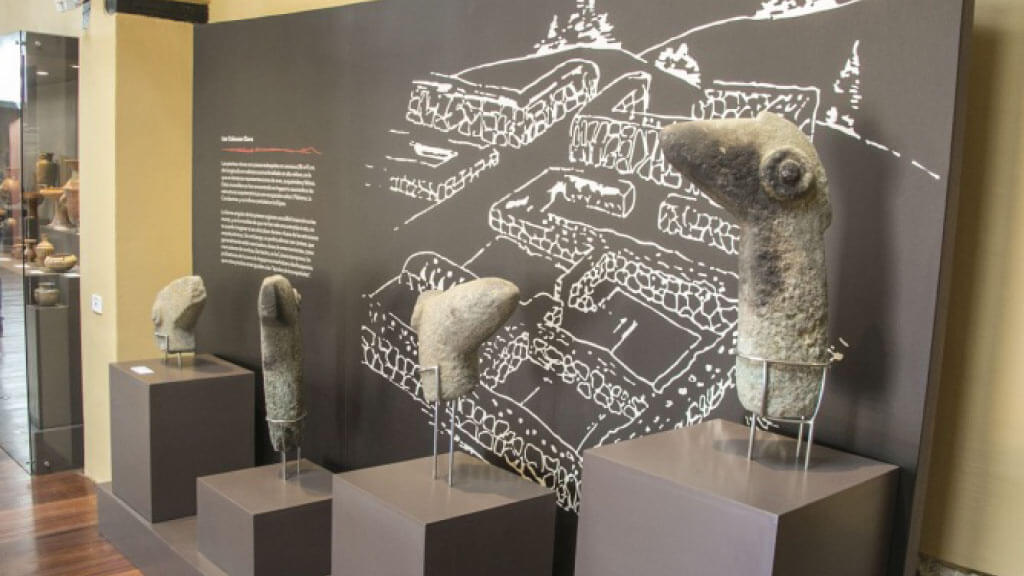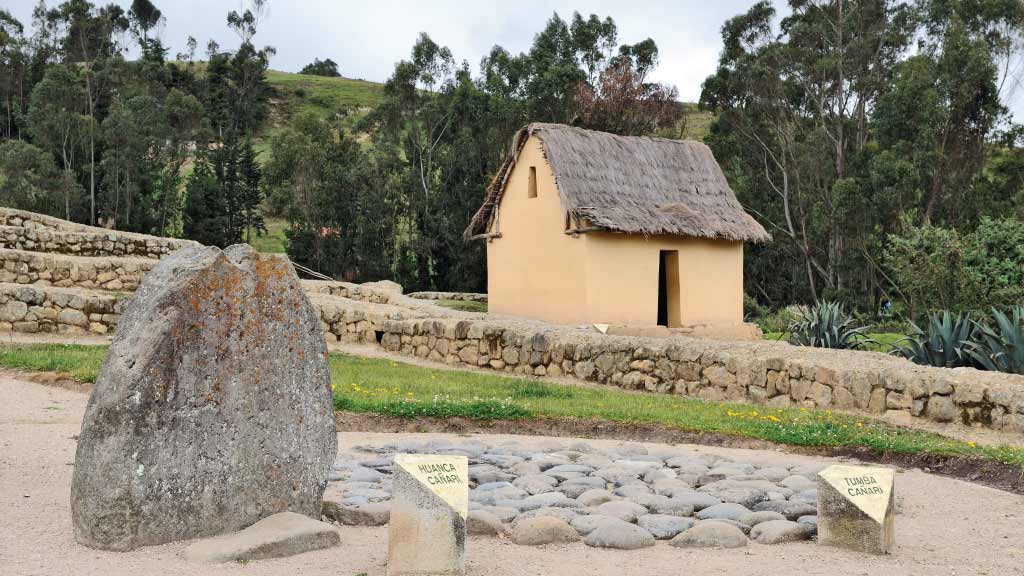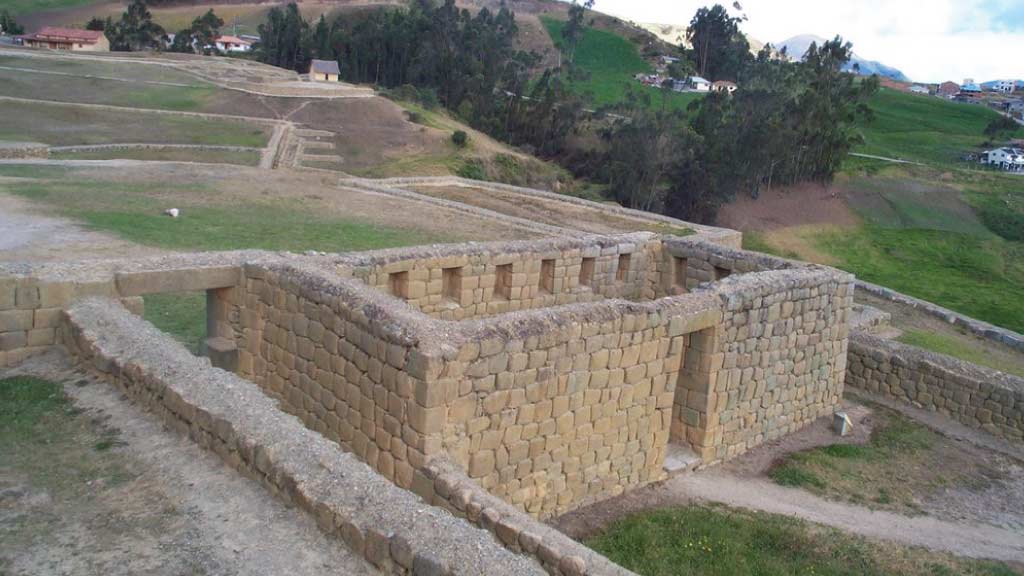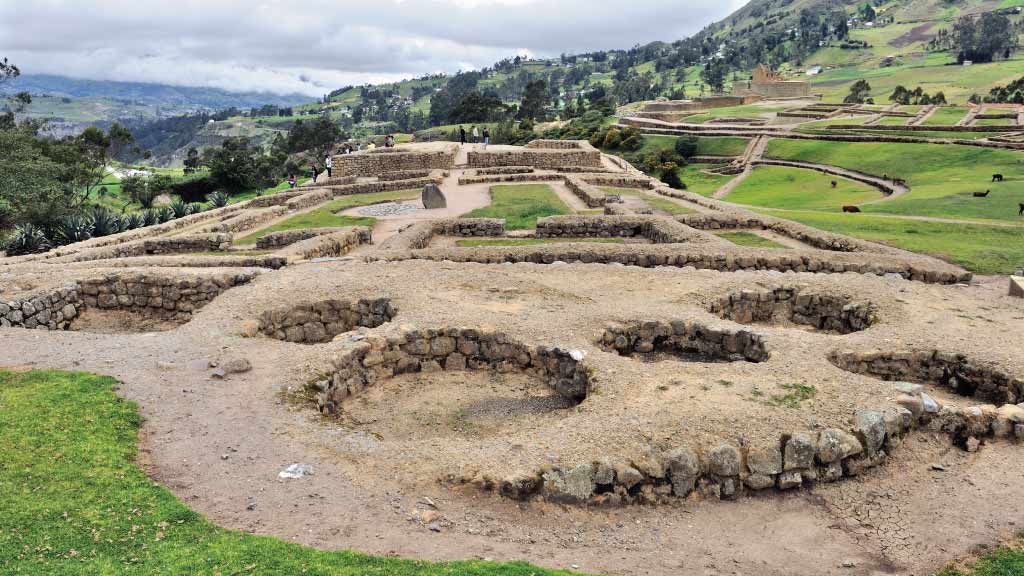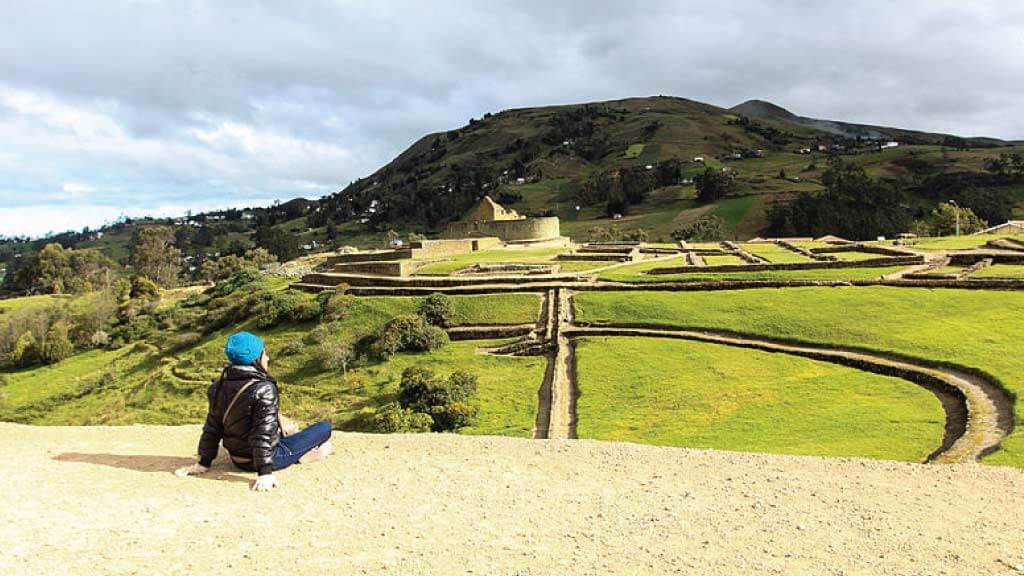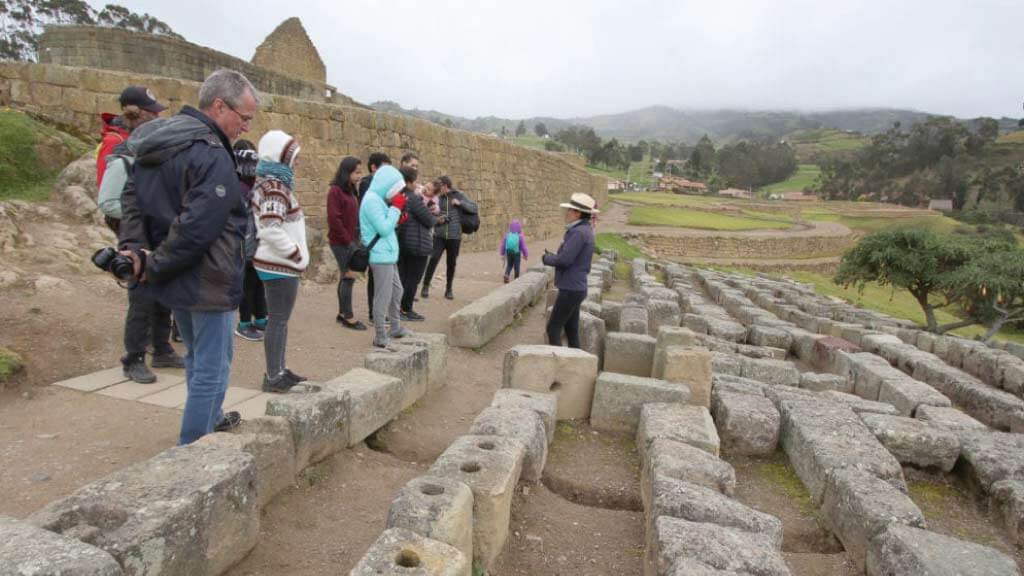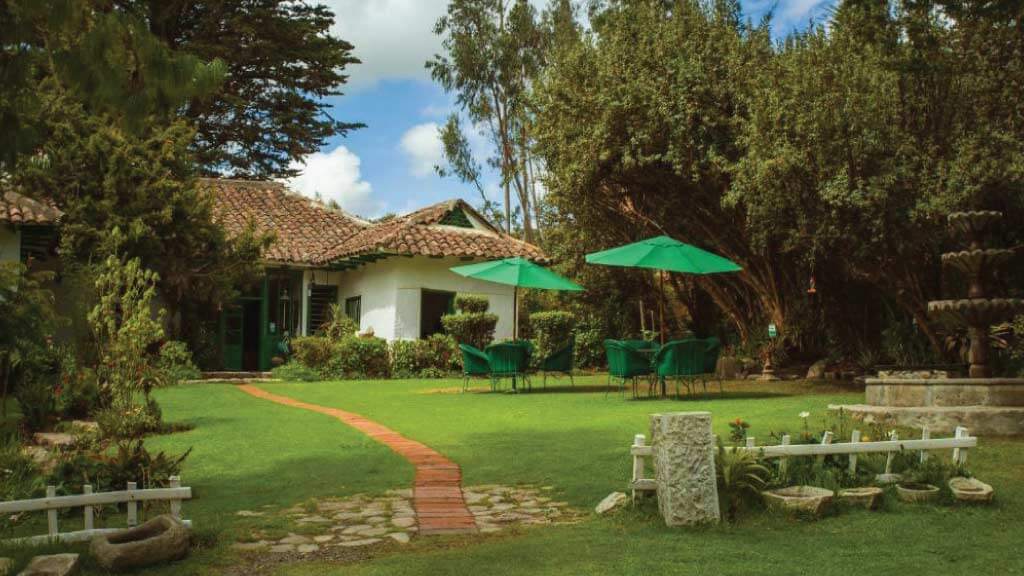Ingapirca: The Largest Inca Ruins in Ecuador
The Ingapirca Ruins (Ruinas de Ingapirca) are the most important archaeological site in Ecuador. What makes these ruins unique is that they blend together elements of both Inca and Cañari culture - this was very unusual in the Inca Empire. The Ingapirca complex is not only a fascinating peak into Ecuadorian history, but also a beautiful and serene place to appreciate the beauty of the Andean landscape. What's more, Ingapirca's Sun Temple is very photogenic, and the resident llamas help to create the perfect scene for Instagram posts.
Keep reading for the ultimate visitor guide to Ecuador Ingapirca Ruins. Before we get into the nitty-gritty of how to visit, let’s find out where Ingapirca is in Ecuador, and why the ruins are so important.
SECURE YOUR ECUADOR TRAVEL
Get a FREE personalised quote todayWhere is Ingapirca Ecuador?
The Ingapirca Ruins are located in the province of Cañar in the south of Ecuador, approximately 80 kilometers (50 mi) north of Cuenca city. As such, it is a site that makes for an easy day trip from Cuenca.
From Ecuador's capital city, Quito, Ingapirca is a longer 5-6 hours drive, covering a distance of 260km (162 mi).
What Does the Name Ingapirca Mean?
Ingapirca is a local, indigenous name derived from the Quechua language, the official language of the Inca Empire. The literal translation into English is “Inca Wall”, which is very fitting given the impressive stone walls found at the ruins.
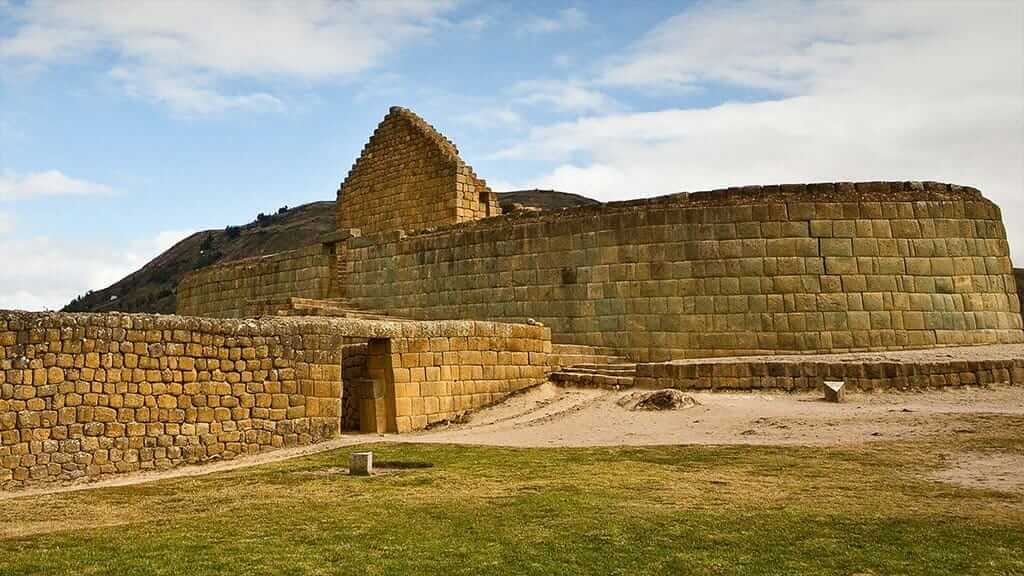
What is the history of Ingapirca Ecuador?
The history of Ecuador's Ingapirca archaeological site, in fact, begins long before the Inca empire. The area was originally settled by the Cañari Indians, who were known to be particularly ferocious warriors. Although history from this period is hazy, we do know that the Cañari had constructed a site of worship dedicated to the moon at Ingapirca.
During the 1400s, the Inca Empire was expanding rapidly through the South American Andes, so it was only a matter of time until they would reach what today is Southern Ecuador. When they did encounter Cañari land, a fierce war was waged, but the Cañari people put up strong resistance.
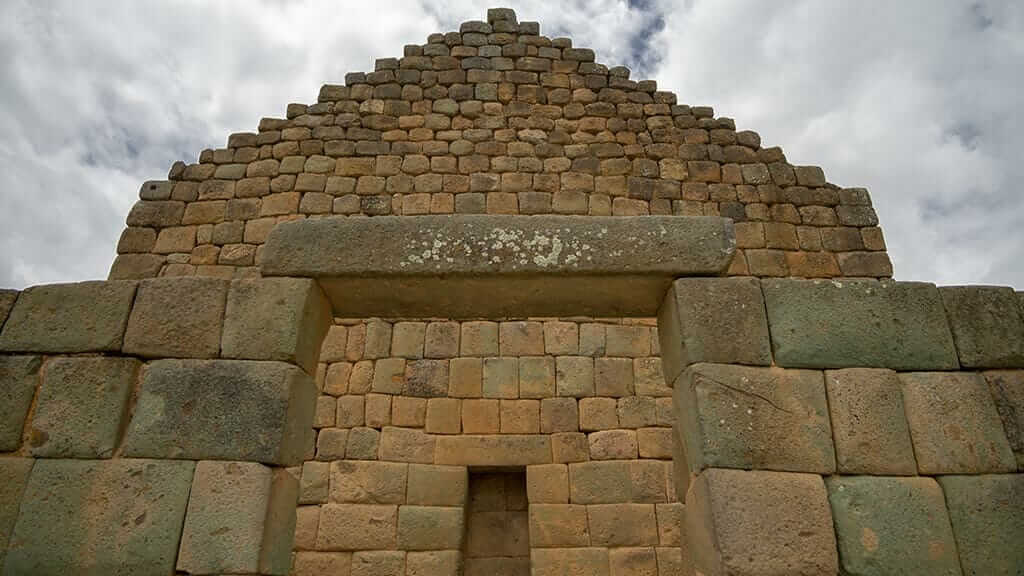
Unable to conquer the Cañari through years of war, the Incas thus sought a peaceful solution - a union with the Cañari people through marriage. So, tired of fighting, both sides agreed to settle their differences and live together peacefully.
The site of Ingapirca was henceforth developed in collaboration between the Cañari and Inca civilizations. Instead of destroying the Cañari temple, the Incas built their own Temple of the Sun alongside the existing Temple of the Moon. The site could therefore accommodate both cultures.
How old is Ingapirca? The joint Cañari-Inca construction dates back approximately 550-575 years.
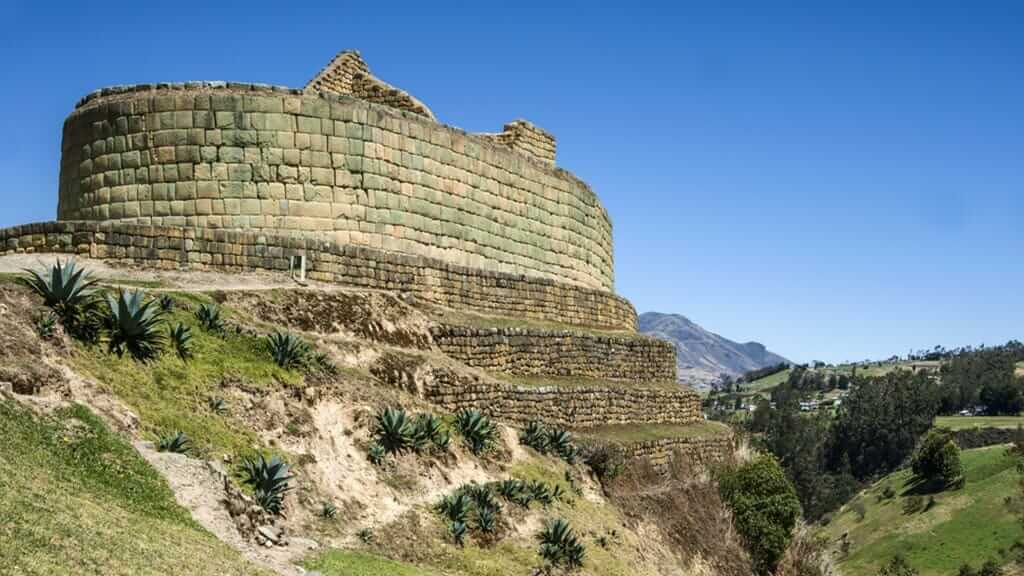
Why was Ingapirca important?
A large part of the importance of Ingapirca to archaeologists is precisely the union of Cañari and Inca cultures. At Ingapirca it is clear to see the differences in architecture and building styles between the two. This was very unusual in the Inca empire, where other tribes were typically conquered through war, and often displaced, with the Incas becoming the dominant force.
What purpose did the structure at Ingapirca serve? Archaeological studies suggest that Ingapirca may have served a variety of different uses.
Firstly, Ingapirca lies on the Inca Trail between Cusco (the political heart of the Inca empire) and Quito (a large northern Inca military outpost). So, the site likely served as a tambo guesthouse for travelers and messengers on the road.
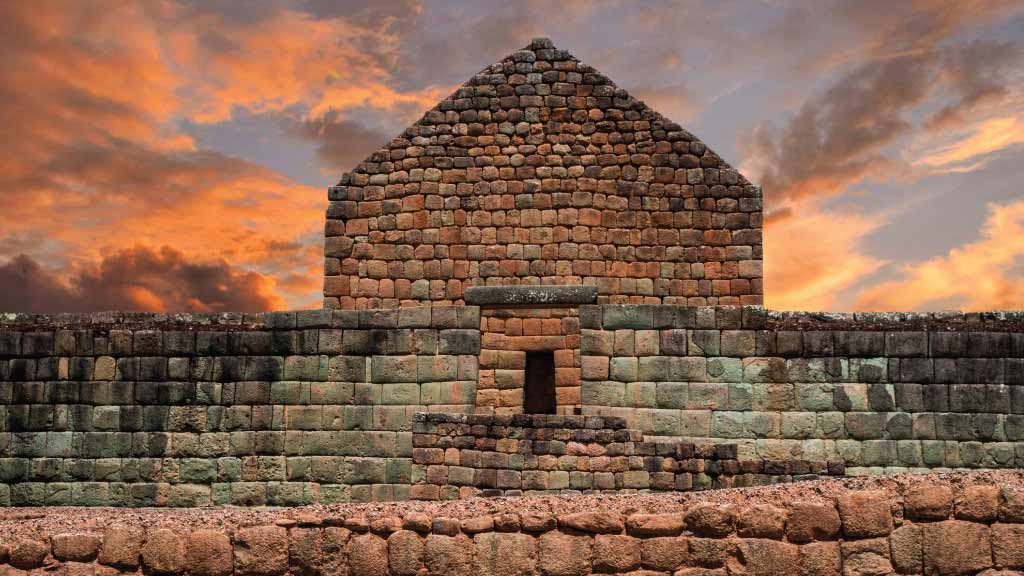
It's also probable that Ingapirca was a fortress of some importance. Ingapirca visitors will quickly realize that the site is a strategic lookout point, with stunning views in all directions. It was therefore the perfect site to observe and protect these Andean valleys. Perhaps a garrison of soldiers was stationed even here.
Visitors to Ingapirca Ecuador can also discover other interesting conclusions from today's ruins. The temples (of the sun and the moon) suggest a site of considerable ceremonial importance as a place of worship. The alignment of certain parts of the structures also alludes to astronomical observation - but, more on this later.
Due to the size and distribution of the ruins, it is believed that high-status families may have lived here. Perhaps also a high priest who would have played a key role in indigenous ceremonies on important dates such as solstice and equinoxes. There is some evidence to suggest that ritual sacrifice may also have taken place here.

Although not proven, I have also personally been told by several guides that the site of Ingapirca was designed in the shape of a puma. Looking at a map, it is possible to see the potential outline of a head, body, and legs. The same is true of the design of the city of Cusco, which might imply that the Incas considered Ingapirca to be a site of importance to them.
As always with archaeological ruins, a lot of speculation and guesswork is involved. But, what can be stated beyond a doubt is that Ingapirca was once a significant and meaningful site for both the Cañari and the Inca civilizations. And, today Ingapirca Ruins are the largest remaining Inca site in all of Ecuador.
How Did Ingapirca End Up In Ruins?
The history of Ingapirca in Ecuador was short-lived. The site is suspected to have been destroyed during the Inca Civil War (1529-1532). This period was also known as the War of The Two Brothers, fought over succession to Huayna Capac's throne, between his sons Huayna Capac and Atahualpa.
The Spanish conquest of South America followed shortly after the civil war. This left the site of Ingapirca ransacked, with many of the stones used to build Spanish churches and haciendas in and around Cuenca.
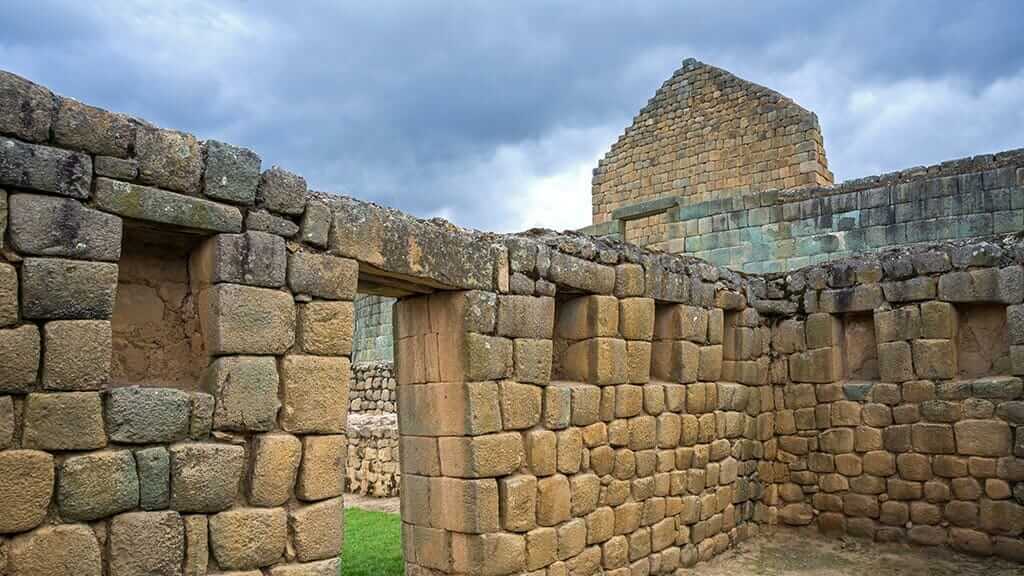
Ingapirca then lay largely abandoned and forgotten through the centuries, until the Ecuadorian government began restoration and opened the site to tourists in 1966.
Remarkably, although today the Incas and Spanish are long gone, the Cañari people still live on. Descendants of the original Cañari indigenous people still inhabit this region, and administer the complex. They also sell food and souvenirs at today's tourist site. Visitors who take the opportunity to converse with Cañari people will quickly appreciate the pride that they feel in their ancestors, and especially the fact that the powerful Incas were unable to conquer the Cañari in battle.
GET FREE ADVICE
From an Ecuador destination expert todayWhat to See at Ingapirca Ecuador?
1. Onsite Archeological Museum
Visitors should begin at the small museum close to Ingapirca's entrance. This showcases a collection of Cañari and Inca ceramics, tools, sculptures, traditional clothing, and a skeleton found in a tomb at the site.
The museum is administered by the indigenous Cañari people. Admission is included in the entrance fee to the Ingapirca archeological complex.
2. Temple of the Sun
Ingapirca is dominated by the spectacular, elliptical Temple of the Sun. It is certainly the best restored and most photogenic section of the Ingarpica archaeological site.
The temple is both Cañari and Inca in origin. The Inca temple was built on top of an ancient Cañari ceremonial rock, originally used to worship the moon.
This is the best place to appreciate the wonders of Inca stonework. Incan builders used their famous mortarless technique, hand carving volcanic stones so precisely that they fitted together seamlessly. Similar handy work can be appreciated at Machu Picchu and in the city of Cusco.
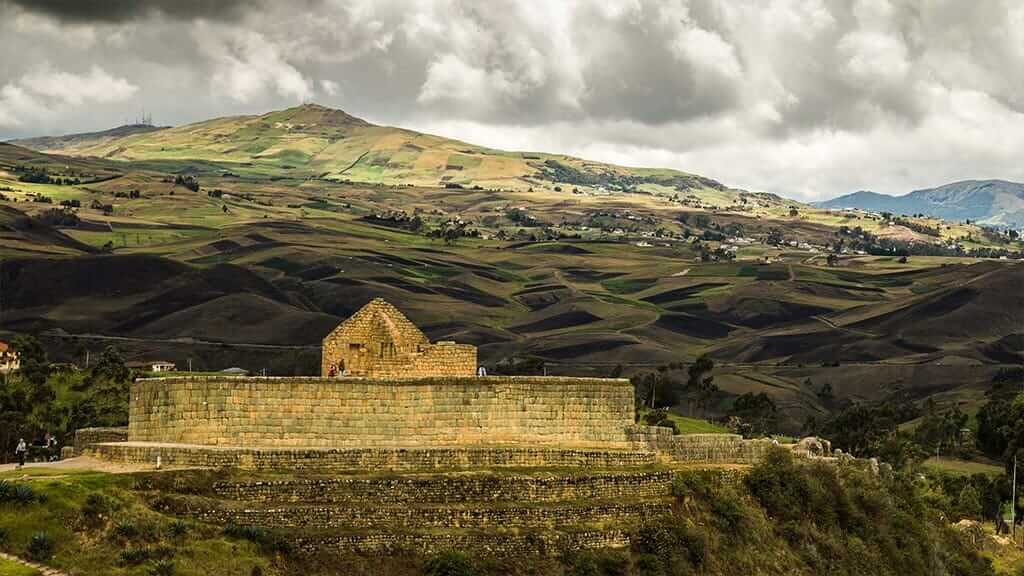
While the architecture of the sun temple is impressive in itself, the precise positioning of the temple construction is mind-blowing. If you are fortunate enough to visit Ingapirca on a summer (Inti Raymi) or winter (Kapak Raymi) solstice, you'll witness sunlight entering precisely through the center of the doorway of the small chamber at the top of the temple. This is clearly no accident. Remember, the Inca people worshiped the sun, so solstice dates were times of great celebration (and still are).
Like many cultures, the tracking of solstice and equinox dates was important to the Incas to mark the turning of agricultural seasons, for planting and harvesting.
It is also believed that the sun temple was likely a sacrificial site, where humans (virgin women) and animals (llamas) were offered to the Gods.
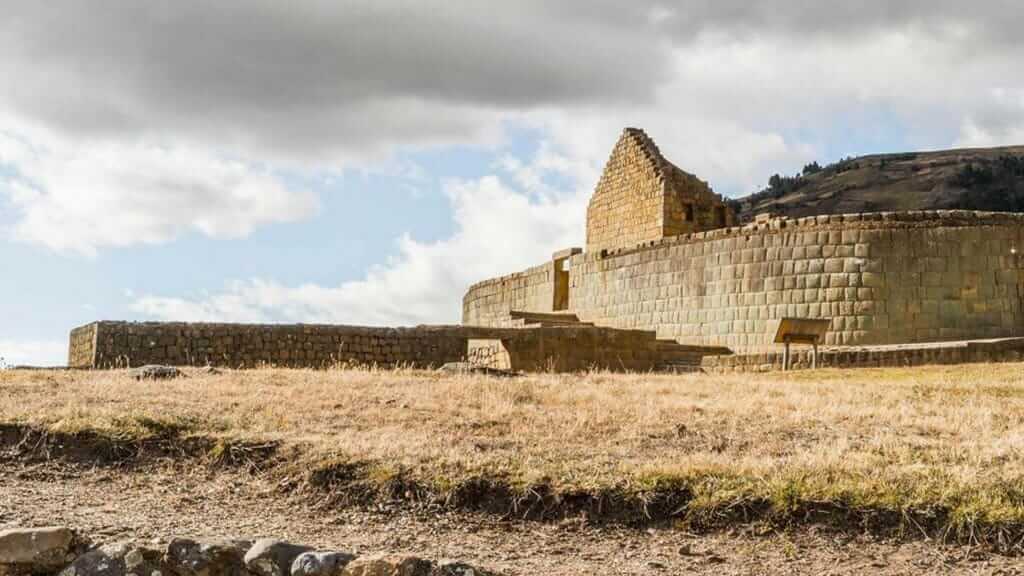
3. Ancient Cañari Tomb
Another interesting part of Ingapirca is the Cañari tomb, where a priestess and 10 of her servants were found buried. In accordance with ancient burial practices, upon the death of a head societal figure, servants would be buried alive together with the body. Artifacts and belongings signifying the wealth and status of the deceased were also buried, including spondylus shells in this case.
4. House Of The Chosen (Acllahuasi)
Next to the Sun Temple is the House of the Chosen, where Virgins of the Sun lived and studied. The virgins were beautiful, young, pure women who were taught to dance, embroider, weave, and cook under strict supervision. Their duties might have included the entertainment of visiting high-rank Incas, as well as acts of ritual and ceremonial importance. Quite possibly the virgins were also sacrificed to the sun, which at the time was considered to be a special honor.
Close by, visitors can also see the ruined foundations of baths, and an open plaza, perhaps both used for ceremonies.
5. Aqueduct System & Store Rooms
Other places of interest include store rooms for grain, agricultural terraces, and a complex underground aqueduct system to provide water for the compound. This is further evidence to suggest that a significant number of people lived permanently at the site.
Another Ingapirca curiosity is the large stone near the Sun Temple. This stone has 28 holes of varying shapes and sizes, leading to much speculation about its purpose. Although not completely understood, one theory is that it could have functioned as a lunar calendar. By filling the holes with water, the reflection of moonlight might have helped inhabitants mark the passing of each month.
6. Face of the Inca (Cara Del Inca)
Last but not least is Ingapirca's famous Face of the Inca. Taking a short walk from the main complex, visitors find a cliff, with a giant formation resembling a human Inca face. Some claim that the Incas chose this site to build their Sun Temple in the belief that the giant Inca would watch over and protect them from harm.
How To Visit Ingapirca Ruins?
So, having learned all about the Ingapirca ruins, let's find out the different ways to plan your visit.
1. Visit Ingapirca By Yourself
For an educational day trip from Cuenca, it's perfectly possible to visit Ingapirca by yourself. Public buses run daily from Cuenca Bus Terminal to Ingapirca. At the time of writing, Transportes Cañar operates direct buses (9am and 12:20pm Mon-Fri, 9am Sat & Sun, 2.5 hours, $3.50 per person). It's also possible to connect through the towns of Cañar or Tambo.
Onsite tour guides are available at the complex, and included with the entrance fee. However, visitors often have to wait for a guide to be available in English. There are also signs in Spanish, English, and Kichwa along the designated route around the ruins to explain the function of each area.
2. Ingapirca Day Tour
A popular alternative is to take a guided tour of the ruins from Cuenca, as a 1/2 day or full-day trip. Hotel-to-hotel return transport is included, which makes life easier. You'll also have a private English-speaking guide to explain more about Cañari and Inca history and culture.
If you planning on spending more time in and around Cuenca, check out Happy Gringo's Cuenca highlights 4day-3night trip. It's also easy to include a visit to Ingapirca into a Custom-made Ecuador itinerary.
3. Ecuador Inca Trail
For a truly authentic experience, how about a 3-day Inca Trail trekking tour? Follow part of the old Qhapaq Ñan Inca road, camping overnight, to arrive at Ingapirca ruins on the final day. Not only is the trek in itself both interesting and enjoyable, but you'll also be able to enjoy bragging rights over day-tripping visitors as a reward.

Where to Stay near Ingapirca?
For an overnight stay at Ingapirca Ruins, the best choice is Posada Ingapirca. This restored 200-year-old estate lies just 300 meters from the ruins, offering rustic guest rooms, a warm fireplace, and tasty home-cooked meals. Be sure to book ahead of time to guarantee a room is available for your stay.
Practicalities For Visiting Ingapirca in Ecuador
- Ingapirca elevation: 3200 meters above sea level (10,500 ft). Check our Quito altitude blog for tips and advice to avoid symptoms of altitude sickness.
- The site of Ingapirca is rather exposed, so weather conditions can change quickly on any given day. Go prepared for sun (sunblock, hat, and shades), cold (warm layers), and possible rain (rainjacket).
- Entrance tickets must be bought onsite at the information center. The fee of $6 includes your guide for the complex tour (in English or Spanish) and the museum entrance.
- Ingapirca opening hours: 09:00-16:00 Wednesday to Sunday, closed on Mondays & Tuesdays.
- All visitors are obligated to visit the ruins complex with an official tour guide. It is not possible to wander around on your own. Tour guides are available at the site, or bring along your own private guide from Cuenca.
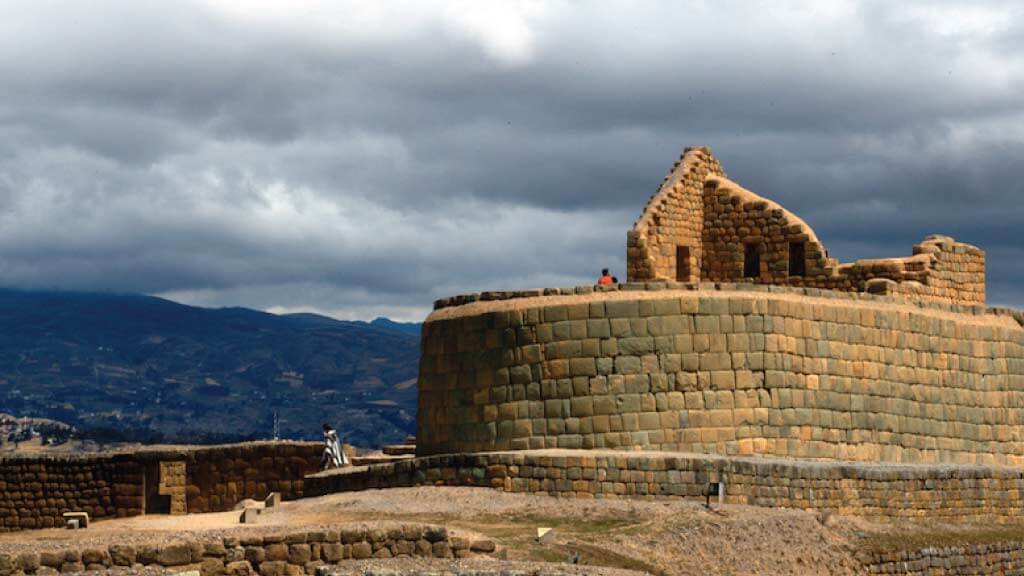
- For food either bring along your own snacks, eat local fare at the site, or head up to Posada Ingapirca for lunch. It is recommended to pre-book meals at the Posada to avoid disappointment and possible long wait times.
- There is a small herd of llamas onsite. They are tame animals, and wonderful to photograph, but please do remember to respect their space and avoid the temptation to feed them.
- Last but not least, we recommend managing your expectations before you visit. If you have already visited Machu Picchu or other extensive Inca sites in Peru, then don't expect to be blown away at Ingapirca which is considerably smaller in scale. On the other hand, if Ingapirca is your first experience of Inca ruins, you will likely be pleasantly surprised & thoroughly enjoy your visit.

Photo Taken From: patrimoniocultural.gob.ec
Book with the The #1 Trusted
Ecuador Travel Agency
In conclusion, Ingapirca ruins are the most important Inca site in Ecuador, and visitors get to learn about the local Cañari culture as a bonus. If you love to learn about history as you travel, then a trip to Ingapirca is highly recommended. Photographers will also enjoy the experience, especially in moody weather, or with rainbow backdrop.
Contact us for a FREE TOUR QUOTE – Happy Gringo specialise in custom-made trips right across Ecuador, Peru, Colombia and the Galapagos Islands. We’ll be happy to include a visit to Ingapirca ruins archeaological complex into your travel itinerary.



